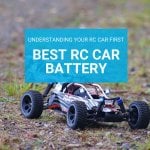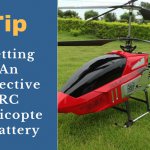Lithium polymer(LiPo) battery is a chemical battery with high energy, miniaturization and weight reduction. At present, majority of RC Car, truck, buggy, FPV and etc. are powered by lithium polymer batteries. Therefore, only lithium polymer batteries are discussed here.
- Lithium polymer battery charging process
At present, lithium polymer battery charging is mainly a voltage limiting current limiting method. The initial constant current (CC) charging has the strongest battery receiving capacity. As the charging process continues, the charger simultaneously increases the charging voltage, the polarization is strengthened, the temperature rise is intensified, and the voltage rises, to speed up the charging. When the voltage reaches the maximum charge limit voltage of 4.2V, the battery is charged with about 70% of the charge (not full). Transfer to the constant voltage (CV) charging phase. In the constant voltage phase, also known as trickle charging, the charger continues to charge the battery with a constant voltage and gradually decreasing current. It takes about 30% of the time to charge 10% of the power, the current intensity decreases, and the temperature does not rise anymore. When the value is less than 0.1A and the battery voltage continues to rise, the charging will stop.
This process should consider the total voltage or average voltage control of the battery pack. In fact, there is always a higher cell voltage, and other batteries in the opposite group have entered the overcharge phase. Similarly, during discharge, there is an overdischarged battery in the group. Overcharge and overdischarge are fatal to the battery. The only difference is that overcharge generates a large amount of gas, is prone to spontaneous combustion and explosion, and the appearance is severe; And for the overdischarge, the appearance changes slowly, but the failure speed is extremely fast, and should be strictly avoided in normal use. In this regard, there is a new LiPo battery charging method called parallel control and equalization management, which can separately charge and discharge management and equalize control for each cell. This dynamic equalization concentrates the two equalizations of discharge equalization and charge equalization. The advantage is that although the initial capacity, voltage, internal resistance and the like of the individual cells are different, the relative charge and discharge intensity and depth consistency can be ensured in the work. This method is particularly suitable for high current discharges.
- Charging parameter range
The safe working voltage range of LiPo battery is 2.8~4.2V. Below or above this voltage range, the lithium ions in the battery become very unstable and even cause accidents.
To ensure that the battery is in a safe range, avoid overcharging. Therefore, a special charger is required. These chargers automatically adjust the charging method based on the current state of the battery. If some chargers are not powered off after the battery is fully charged, the battery will be fully charged and will not stop charging, which will cause certain harm to the battery. Also, after the long-term use of the charger, it will also cause the battery not stop charging when it is full. In particular, it is necessary to pay attention to the parameters of the battery cells to be used. It must be consistent. When the LiPo battery is used in combination, it is necessary to add a PCB protection board to the battery pack to prevent the battery core from bulging, leaking, or even igniting or exploding. Do not overcharge to extend the life of the battery as long as possible, , increasing the number of cycles of battery use. Therefore, in the process of charging the lithium polymer battery, someone needs to look at it. In order to avoid battery failure, an explosion and injury incident.
It is best to use slow charging when charging. Try to avoid fast charging. Repeated charging and discharging will also affect the life of polymer lithium battery. If it is not the battery manufacturer’s permission, it is recommended to charge the polymer lithium battery at 0.5-1C. Almost all drone LiPo batteries can be charged under 1C and should be charged at this rate. This charging speed does take a little while, but it is best for your battery charger and won’t cause overheating. Allowing the balanced port to do its job, this charging rate will provide the longest life for your battery. For example, a 1550 mAh battery charged at 1 C sets the charger to a charge rate of 1.15 amps.
- Battery maintenance knowledge and other considerations
1) Avoid storage with full power. If the battery is fully charged, it is impossible to save it for more than three days in the case of full power. After one week, the battery will be directly bulge. Another possibility is that the battery will not be bulged at the time, but in the next few charging times. If the battery is not used for a long time, it is better to discharge the battery to 3.85v to keep the battery in the best condition.
- Thelithium polymer battery has self-discharge phenomenon. If it is not used for more than 7 days, the battery should be fully charged before use.
- Avoid excessive discharge. If the battery is over-discharged, it will have a direct impact on the battery life.That is, use the battery smoothly and in a planned manner. Do not let the battery run out easily, and do not charge it for too long.
4) The charging time of the lithium polymer battery is not too long as possible. For the ordinary charger, the charging should be stopped immediately after the lithium polymer battery is full, otherwise the polymer lithium battery will affect the battery performance due to heat or overheating.
5) After charging the lithium polymer battery, try to avoid placing it on the charger for more than 10 hours. If it is not used for a long time, the RC car/airplane and the polymer lithium battery should be separated.
6) Avoid charging at too high temperature. If the general lithium polymer battery is used in an environment higher than the specified operating temperature, that is, above 35 °C, the battery power will be continuously reduced, that is, the battery power supply time is not will be as long as usual. If the device is to be charged at such a temperature, the damage to the battery will be greater. Even if the battery is stored in a hot environment, it will inevitably cause damage to the quality of the battery. Therefore, trying to maintain a favorable operating temperature is a good way to extend the life of the lithium battery.
7) Similarly, the general lithium battery should avoid charging at too low temperature. If lithium battery is used in low temperature environment, ie below 4 °C, the battery life will also be reduced. Some batteries should not charge in low temperature environment. But don’t worry too much. This is only a temporary situation. Unlike the use in high temperature environment, once the temperature rises, the molecules in the battery are heated and immediately return to the previous power.
8) Always use. In order to maximize the performance of a lithium-ion battery, it is necessary to use it frequently so that the electrons in the LiPo battery are always in a flowing state. If you do not use LiPo batteries frequently, please remember to complete a charging cycle for the battery every month, do a power calibration, that is, deep charge and deep discharge once.
9) This is a flying issue, not a charging issue, but it requires attention. When flying, try not to let the battery run out. You can control the minimum speed cutoff value, set above the minimum voltage of the battery pack, so that there is some extra time to set the landing.




